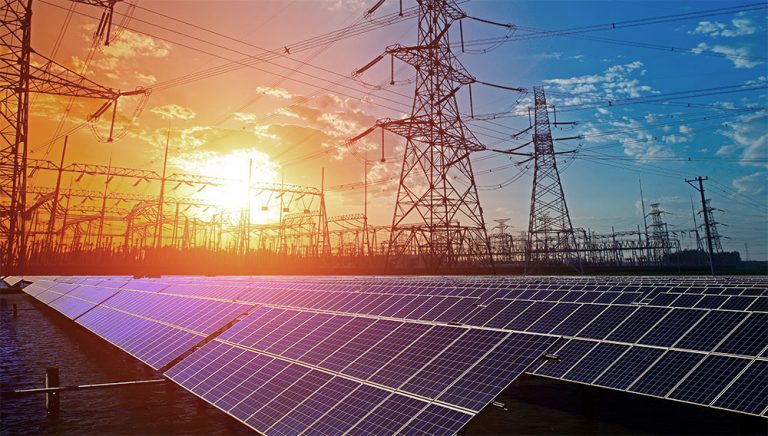For the past couple of years, the exponential unfolding of the dramatic consequences of climate change has proved that environmental conservation should indeed be prioritized. Thus, it’s crucial for governments to kick off strategies that address the intermittent availability of pure energy sources like wind and solar to run your refrigerator or run your dishwashers with cold water. Global adoption of natural energy sources would be the perfect solution for the high carbon emissions that’s currently being reported across the world. The obvious solution for renewable energy’s intermittency is designing reliable energy storage solutions that can act as reserves during inclement weather, but the financial implications of bringing this vision to life makes it a constrained endeavor.
To design and facilitate energy storage, governments first have to overcome the technological shortcomings, regulatory roadblocks and the economic ramifications of a project of this magnitude. Only then, can interested organizations jump on the bandwagon to spur investment and foster competition. It’s clear that while opportunities of innovating future energy storage solutions exist, the challenges are far from trivial.
However, necessity breeds innovation, and that’s the motto Singapore is currently going by as far as energy storage is concerned. The existence of reliable solutions like the Enovatek energy storage system provides a glimmer of hope the rest of the world should look up to to clear any doubt about the global adaptation of energy reserves as a reality. Singapore’s economic boom and growing population incentivized Enovatek energy to design a storage solution that turned out to be the answer to the country’s increased energy demand.
Singapore continues to demonstrate that they understand the globe’s main agent today; to strike the perfect balance between electricity supply and demand without increasing their carbon footprint. Keep reading to discover the steps that have thus far been made to decarbonize the globe and the challenges that are delaying the innovation of energy storage solutions.
Feasibility of long-term Energy Storage
Rapid digitalization and introduction of new market innovations play a huge role in expediting the designing and facilitation of battery storage. If you look beyond aggregate growth projections, you notice that Asian countries are front and center when it comes to modernization of power grids and developing storage solutions for renewable energy. And the proof is in tangible solutions like energy storage systems in Singapore and other parts of the continent.
Aside from Singapore, the Philippines is also especially active because the country’s hot and humid weather means they have high demand for air conditioning energy and intense solar energy to quench the countries’ thirst for indoor comfort. Asia is particularly focusing on leveraging battery storage because it’s a proven concept that requires some advancements to make it a sustainable solution.
Battery Storage as a Possible Solution
The current decrease in battery costs further supports the agenda to use them as primary storage solutions for renewable energy. However, there is concern that even the drastic decline in battery prices is not enough to guarantee that creating large scale storage solutions will be financially feasible. Thus, global players have to pump the brakes on this long overdue innovation despite the fast-changing energy sector being ready for the prospective new realities.
What’s more, Lithium-ion batteries being the most dominant battery technology in the market can not yet be used to test out the innovation because they can only store energy for a few days at best. Beyond that, they start to self-discharge until the stored energy runs out. A sustainable energy storage solution should be able to reserve energy for an extended period in anticipation for when the demand for energy increases. Hence, to guarantee long-term storage, researchers and scientists have to figure out how to boost the energy capacity of Lithium-ion batteries. And even then, the number of batteries required to make this vision a reality compromises the financial feasibility of the project. Which means, there is a need for an alternative technological solution which hasn’t been tabled yet. In the meantime, Asia continues to advance closer to a solution that can satisfy the different energy demands across different seasons without harming the environment.
The Link Between Energy Storage and Market Structure
The only way to successfully renewable energy in the power market, reduce the overall cost of electricity generation and phase out carbon-based backup capacities that secure uninterrupted energy supply is to design reliable energy storage solutions.
This would be a massive gain for society and the planet at large because it would spearhead green living that cuts across all industries. But the tabled execution strategies still fall short. And even if innovators were to arrive at a viable solution, the high technological costs would choke out the innovation before it became a reality. What’s more, it still remains unclear if the current economic environment can support the transition from carbon-based energy to green energy. There’s a great need to establish if the market structure can support optimal incentives for investment in renewables.
Wrapping Up
So far, it seems energy storage is a pipe dream that isn’t attainable despite it being a promising solution for climate change. However, the power of technology is limitless, as the evidence shows throughout history, so we might just wake up one day to the news of a viable energy storage solution. Until then, all anyone can do is educate themselves on renewables and possible storage solutions.

